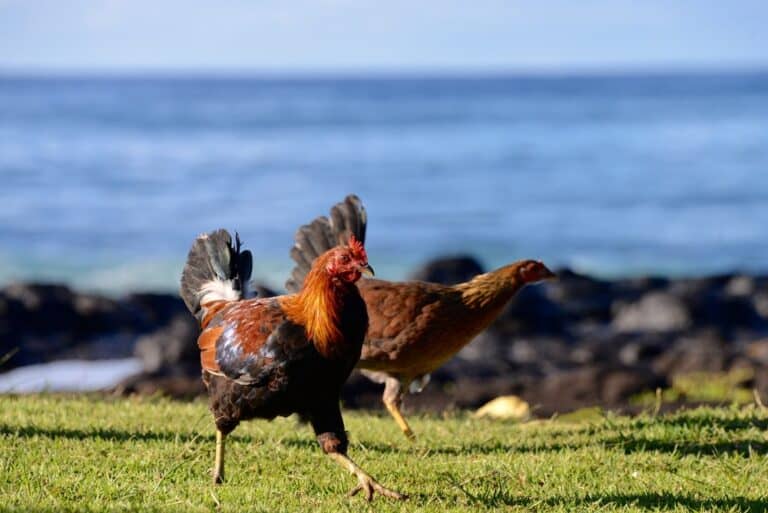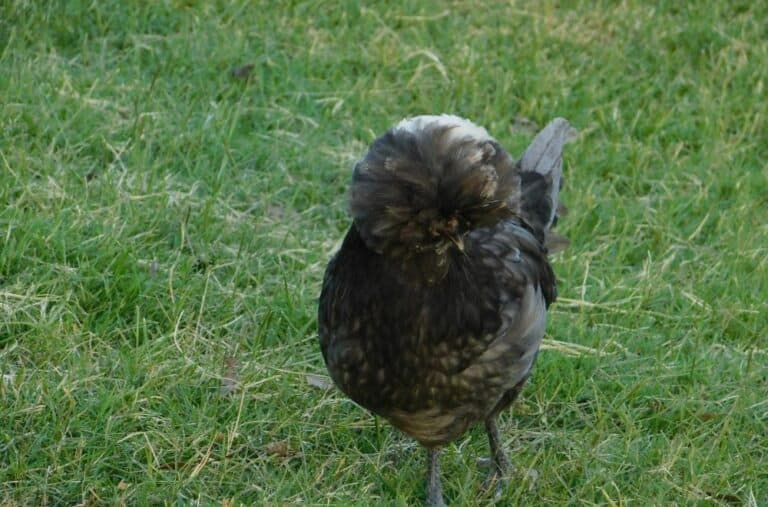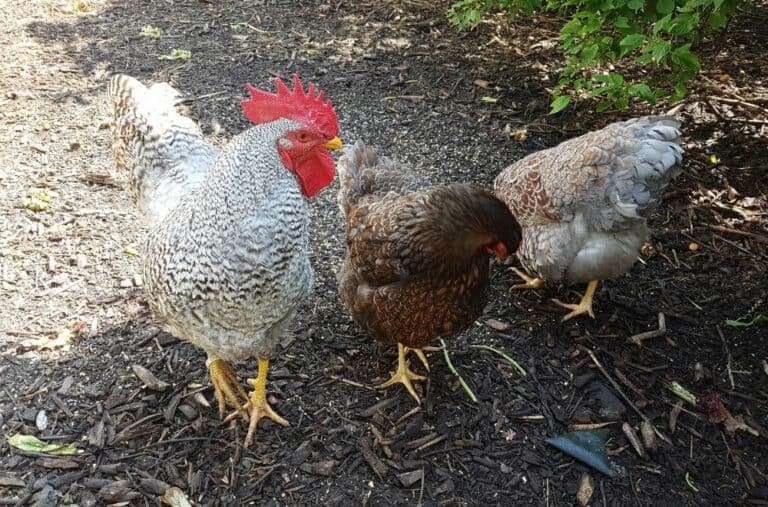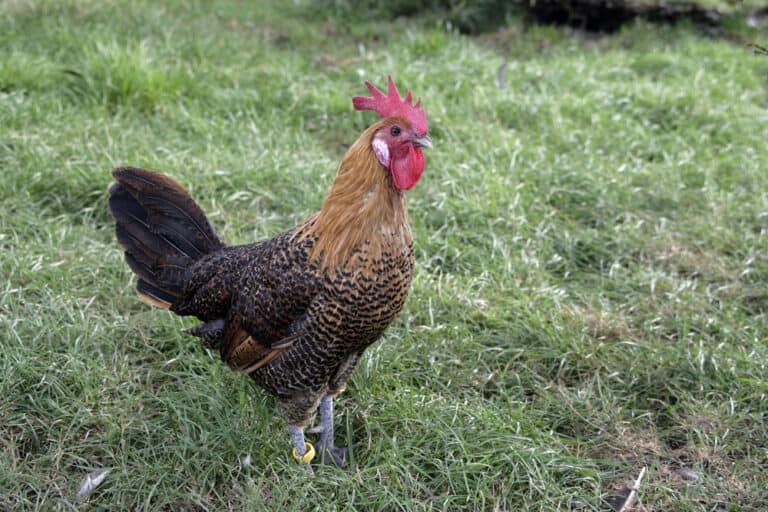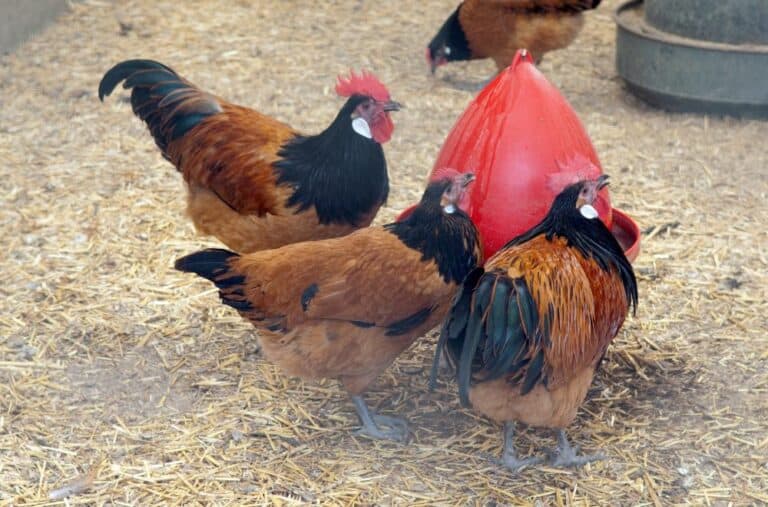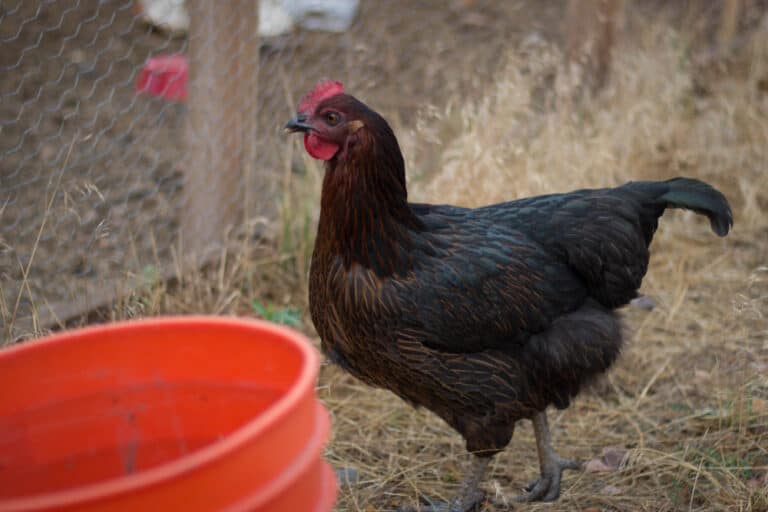The American Game chicken is quite infamous for its cockfighting past but that does lead to the pertinent question of what are chicken keepers to do with this bird in the present. American Game chickens don’t lay as many eggs as the commercial egg layer breeds and they don’t give as much meat as the “table” breeds that are specifically bred for their meat.
So, what purpose does the American Game chicken serve nowadays and how is this formerly fighting bird used today? Let’s go over the details below.
What is an American Game chicken, exactly?
This famous American Game fowl comes in quite a few different variants and has served several different purposes throughout the ages. Most notably, this bird was used for cockfighting all throughout the United States of America, however, this doesn’t define these beautiful birds today.
History of the American Game chicken
The American history of this fighter chicken breed is quite dark. Like many other chicken breeds, the American Game was primarily used for cockfighting for centuries until that bloody sport was eventually outlawed.
The origins of this breed lie in the crossbreeding of many different Oriental and European game chickens. In particular, the vast majority of American Game chicken lines or strains come from Old English Gamefowl, Irish Game, or Oriental Game chickens. Still, there are some American Game chickens that also have their ancestry traced back to Spanish strains and other places such as the famous Sumatra breed.
Regardless of their origins, contemporary American Game chickens have become far more famous as ornamental and exhibition birds than as cockfighting roosters, duking it out in the fighting pits across the United States.
Instead, the various different poultry organizations such as the American Poultry Association, the American Gamefowl Society, the European Entente Européenne d’Aviculture et de Cuniculture, and the Poultry Club of Great Britain have all recognized this breed as a legitimate ornamental and show breed.
What does an American Game chicken look like?
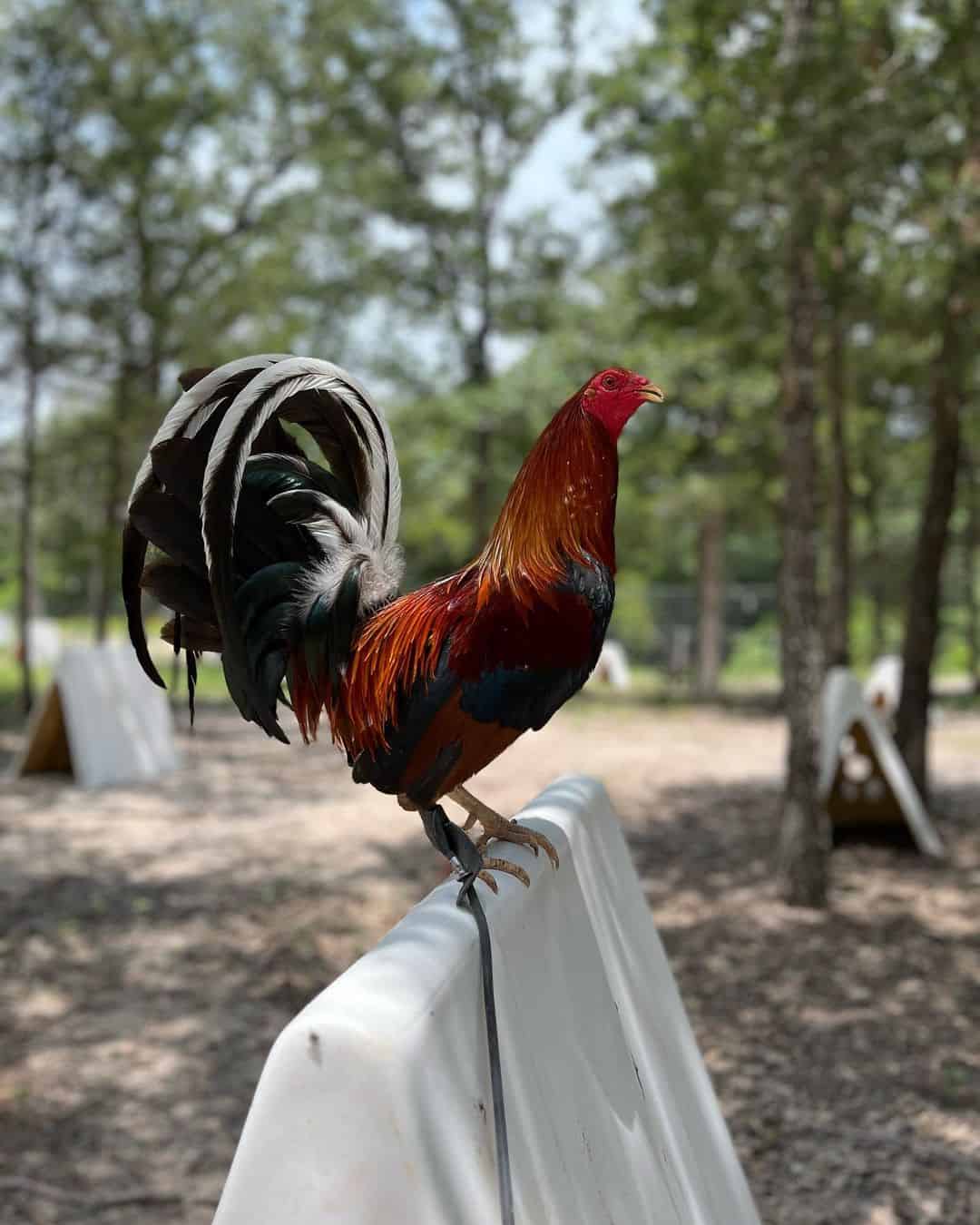
The American Game chicken is a complicated breed, given how mixed its origin is and how many variations of it are there. Most poultry associations break this breed down into various strains such as Claret, Kelso, Albany, Hatch, Butcher, Roundhead, Whitehackle, Sweather, and others.
What’s more, the American Game chicken also has a bantam variant that comes in about ten different colors too. And it’s that bantam American Game chicken that’s actually recognized by the American Poultry Association, not the “full-sized” American game chicken.
To make matters even more complicated, the bantam variant of this breed – i.e. the actual officially recognized variant – isn’t even related to the large size American Game chicken. Indeed, the two aren’t genetically related. The American Game Bantam comes from the crossbreeding of Red Jungle Fowl birds with fighting bantam birds that used to be known as “pit game” birds.
Regardless of their different origins, however, both the bantam and the large size variants of the American Game chicken breed today share quite a few physical and visual similarities.
For starters, both come in a wide variety of colors including brown-red, gold, pumpkin, white, blue, red quil, golden duckwings, silver duckwings, black breasted red, black, and others. For a video representation, you can check out some of these birds’ gorgeous colors and patterns here.
Additionally, the breed standard for exhibition birds dictates that both males and hens ought to have their wattles, comb, and earlobes cut off or “dubbed”. This practice can seem barbaric at first, and it does have its opponents, but its origins aren’t merely cosmetic as this used to be done to prevent frostbite.
Chicken breeds that have a small pea comb don’t usually need this as they are quite cold-resistant. However, breeds with a large single comb such as the American Game chicken can have quite a lot of problems in colder climates which is how the practice of dubbing their combs, wattles, and earlobes came to be.
Of course, nowadays there is no real reason to dub your chickens’ comb, wattles, and earlobes to prevent frostbite as you can just make sure that their coop is properly insulated and heated.
Chicken combs and wattles do serve a physiological purpose, after all, and that’s to help them keep cool in the summer heat. So, by cutting them off to “help” the chickens survive the winter, we are hampering their ability to survive the summer.
At the end of the day, whether you spend extra resources to heat the chicken coop in the winter or you spend extra to cool the chicken coop in the summer, it doesn’t matter much for your energy bills.
Yet, if you’ve got your American game flock for show purposes, there is no escaping from the fact that exhibition roosters and hens are expected to have their wattles and combs dubbed – that’s just the tradition.
In terms of size, a standard size American Game rooster is expected to weigh about 3.5 lbs or no more than 1.6 kg. Hens are naturally smaller and rarely go above 2.5 lbs or 1.1 kg. This is well below the medium size range for non-bantam chickens and it puts the American Game chicken breed in the smaller breeds category
American Game bantams are even smaller as they tend to weigh about 1.8 lbs (or ~850 grams) for males and around 1.7 lbs (or ~765 grams) for females.
American Game chicken health, temperament, egg laying, and other details

Health & Temperament
Putting their good and varying looks aside, what is there to say about the temperament and other characteristics of this ornamental bird? For starters, if you are planning on looking after American Game birds – whether bantams or standard-sized – you should be aware that they are not seen as beginner-friendly fowl.
The reason for that is largely due to their feisty temperament – American Game chickens and their roosters, in particular, are highly competitive and take the flock’s pecking order very seriously. This often puts them in conflict with other roosters and hens, and can lead to some trouble in a mixed flock which tends to require an experienced hand to deal with.
What’s more, these birds are relatively decent flyers which can further complicate things for novice chicken keepers who haven’t completely fly-proofed their chicken runs.
Egg laying & breeding
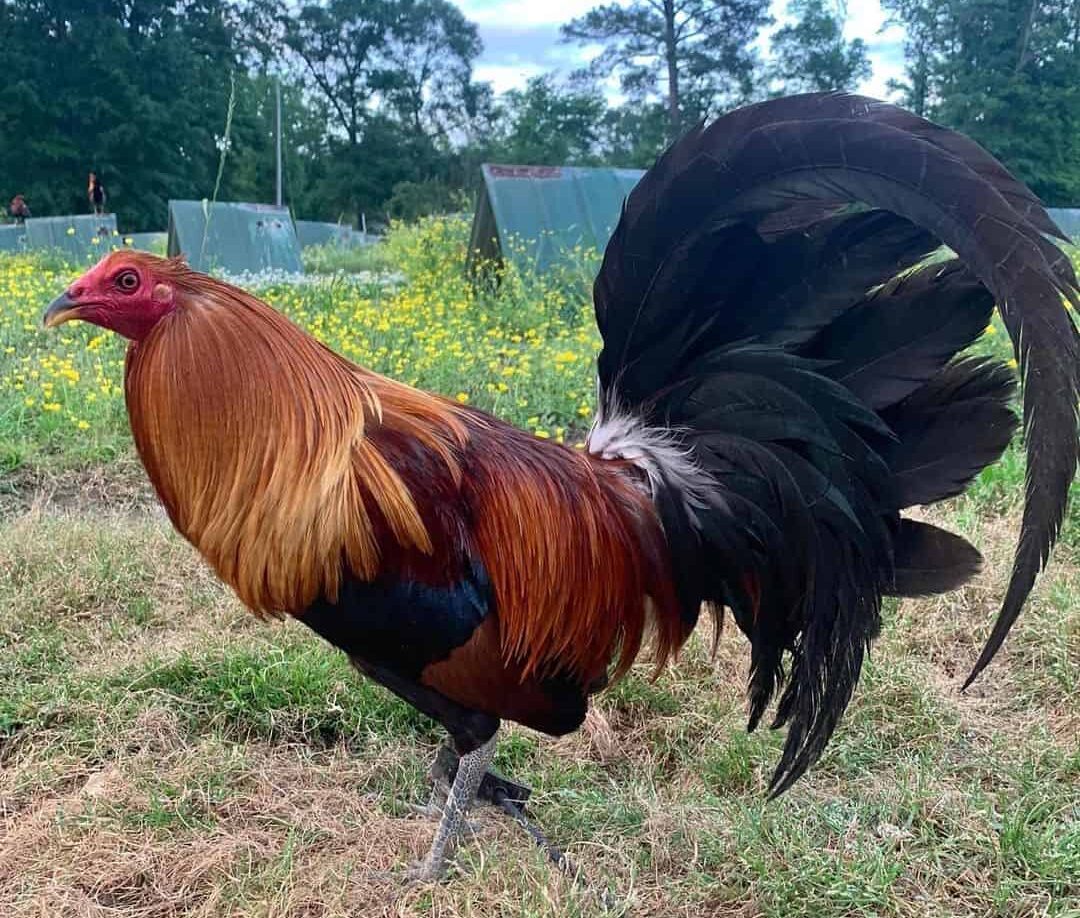
Additionally, American Game chickens aren’t really meant for egg-laying or for table-bird purposes. These chickens are too small to be worth raising for meat and they don’t lay enough eggs to be worth it in that regard either.
The average egg size of these chickens is small to medium and they don’t tend to lay more than 80 to 100 a year or 1 to 2 a week. They do lay nice and nutritious white or cream color eggs but the small quantity is just not good enough for backyard chicken keepers and for homesteaders that want eggs for sale.
That being said, female American Game birds are quite brooding and love to hatch not only their own eggs but those of other birds too. This means that an experienced chicken keeper that is able to get American Game chickens to get along with other poultry birds can utilize the broodiness of American Game hens.
Today’s value
So, what’s the purpose of American Game chickens today? Well, you can say that they are “dual purpose” but just not in the way we usually mean. American Game chickens today are kept either for 1) exhibition and show purposes or for 2) foraging and pest control around the homestead.
That last part is often understated but many homesteaders have seen the value of these hardy birds as general “yard sweepers” in farms and homesteads that are otherwise focused on other types of farm animals and produce. Here’s a more comprehensive video breakdown of the value of game birds in homesteads.
Such use is typically utilized by farmers that don’t focus much on chicken keeping, however, as American Game chickens don’t tolerate other poultry birds too well. So, people who want to look after large egg-laying flocks usually go to other breeds.
In conclusion – is the American Game chicken the right breed for you?
American Game chickens are first and foremost meant for people who want ornamental and exhibition birds to take to shows. These birds aren’t really meant for backyard chicken keepers that want decent egg production and good table birds as game chickens are generally not great at either.
What’s more, these birds’ competitiveness makes them ill-suited for novice chicken keepers that want a diverse but calm and issue-free flock. If you do plan on mixing American Game chickens with a flock made up of other chicken breeds, you’d want to be well-prepared for handling the conflicts that are about to arise.

